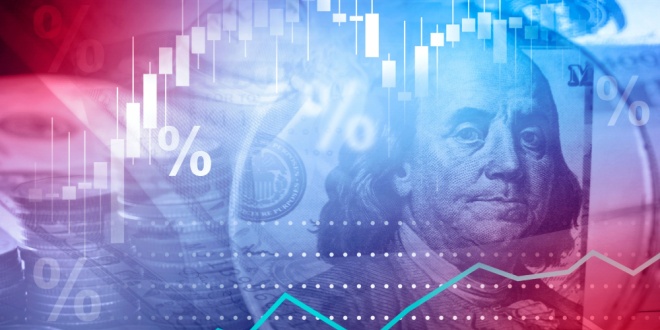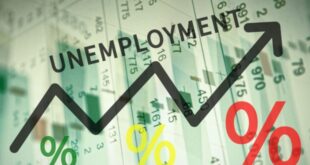Heading into 2025, the Inland Empire economy appears to be in relatively good shape.
In November, the region’s unemployment rate was 5.3 percent, according to most recent data available from the state Employment Development Department.
That’s not an outstanding number, but it matches California’s unemployment rate in 2024, and it’s within the four to six percent range that most economists consider full employment.
Prices were relatively stable in Riverside and San Bernardino counties during November and December. The region’s consumer price index was essentially unchanged – a decline of 0.2 percent – year-over-year, according to the U.S Bureau of Labor Statistics.
The Inland housing market is also healthy at the start of 2025.
Sales were up 20 percent in December compared with exactly one year earlier, and the $600,000 median price of an existing single-family home was a 4.4 percent year-over-year increase.
Manufacturing appears to be the one possible black market in the Inland Empire economy heading into the new year.
The region’s purchasing managers index was an abysmal 42.5 in December, according to the Institute of Applied Research and Policy Analysis at Cal State San Bernardino.
The bad news is that any number below 50 means the manufacturing sector is shrinking. The good news is that it takes three consecutive months to establish a trend, and December was the first month in one year since the index was below 50.
One explanation for the bad month could be that December is usually a slow month for manufacturing, but it’s impossible to say for sure.
Despite that poor showing, the purchasing mangers surveyed last month were more optimistic than they usually are regarding the Inland economy’s immediate future. Thirty five point seven percent said they expect the local economy to improve during the next three months, while 42.9 percent said they believe it will remain the same.
Only 21.4 percent said they believe it will get weaker during that time.
One purchasing manager, quoted anonymously, said “orders are up about five percent compared with one year ago, while another predicted the index will “rebound” in January.“
That cautiously optimistic assessment of the Inland economy is shared by Lisa Anderson, founder and president of LMA Consulting Group in Claremont, which specializes in manufacturing strategy and supply chain management.
Unlike one year ago, when many economists were predicting a recession, locally and nationally, there are no signs now of an economic slowdown, according to Anderson.
“l think, for at least the first half of the year, the Inland Empire economy will remain strong,” Anderson said. “A lot of the Inland Empire economy is based on logistics, and that sector should remain strong. But there won’t be a recession, and only mild inflation, at the most.”
Much on talk leading up to the start of the second Trump Administration was about Trump’s threats to impose stiff tariffs on the United States’s major trading partners, starting with China.
Before taking office, Trump said he was considering placing about a 25 percent tariff on China. One day after he took office, Trump proposed doing the same thing to Canada and Mexico, perhaps as soon as Feb. 1.
Trump’s first term did include a trade war with China, a country that ships approximately $362 billion worth of goods annually into the United States. Trump imposed tariffs on steel, solar panels, medical devices, and on hundreds of billions of dollars worth of other goods, according to reports.
One day into his second term, Trump signed multiple executive orders, many of which had to do with tariffs and restrictions on some trade.
He also began what the administration calls its America First Trade Policy, which orders federal agencies to assess U.S. trade deficits, make policy recommendation based on their findings and make trade strategy a matter of national security.
A possible trade war with China is a particular concern in the Inland Empire, because so many of the goods shipped from there end up in Inland warehouses, but Anderson said she is not concerned.
“I think (Trump) will use the threat of higher tariffs as a negotiating ploy to get better deals,” Anderson said. “Higher tariffs would lead to higher prices on some goods, but not all of that would be paid for by consumers. Some companies will put up with higher tariffs.
“I’m working with some now that are doing that.”
The second Trump Administration ultimately will be good for the Inland region, Anderson believes.
“I expect it to be positive,” Anderson said, “Trump’s policies should be good for logistic and construction, and those are the two most important economic sectors in the Inland Empire. He should help manufacturing also, but that’s not as important here.”
The Inland economy should grow about three percent in 2025, about the same rate as the U.S. economy, said Manfred Keil, associate professor of economics at Claremont McKenna College.
“Interest rates might drop a little, but I don’t expect anything but a mild slowdown in the Inland Empire,” Keil said. “The economy is not going to get smaller.”
Some tariffs on Chinese imports are likely to happen this year, and Keil believes the Inland Empire could see some fallout from that.
“If Trump does half of what he’s talking about doing regarding China, it could affect the trade deficit, because it would reduce the flow of goods,” Keil said. “That could affect the Inland Empire, because a lot of goods could be shifted to the ports on the east coast.
“That could affect the Inland Empire, but not this year. Any tariff, no matter what it does, you won’t feel the impact until 2026 at the earliest.”
Don’t miss the Inland Empire Economic Outlook with economist Dr. Jay Prag coming February 12 at the Chino Airport. Visit Economic Outlook for more information or to register.
 IE Business Daily Business news for the Inland Empire.
IE Business Daily Business news for the Inland Empire.


